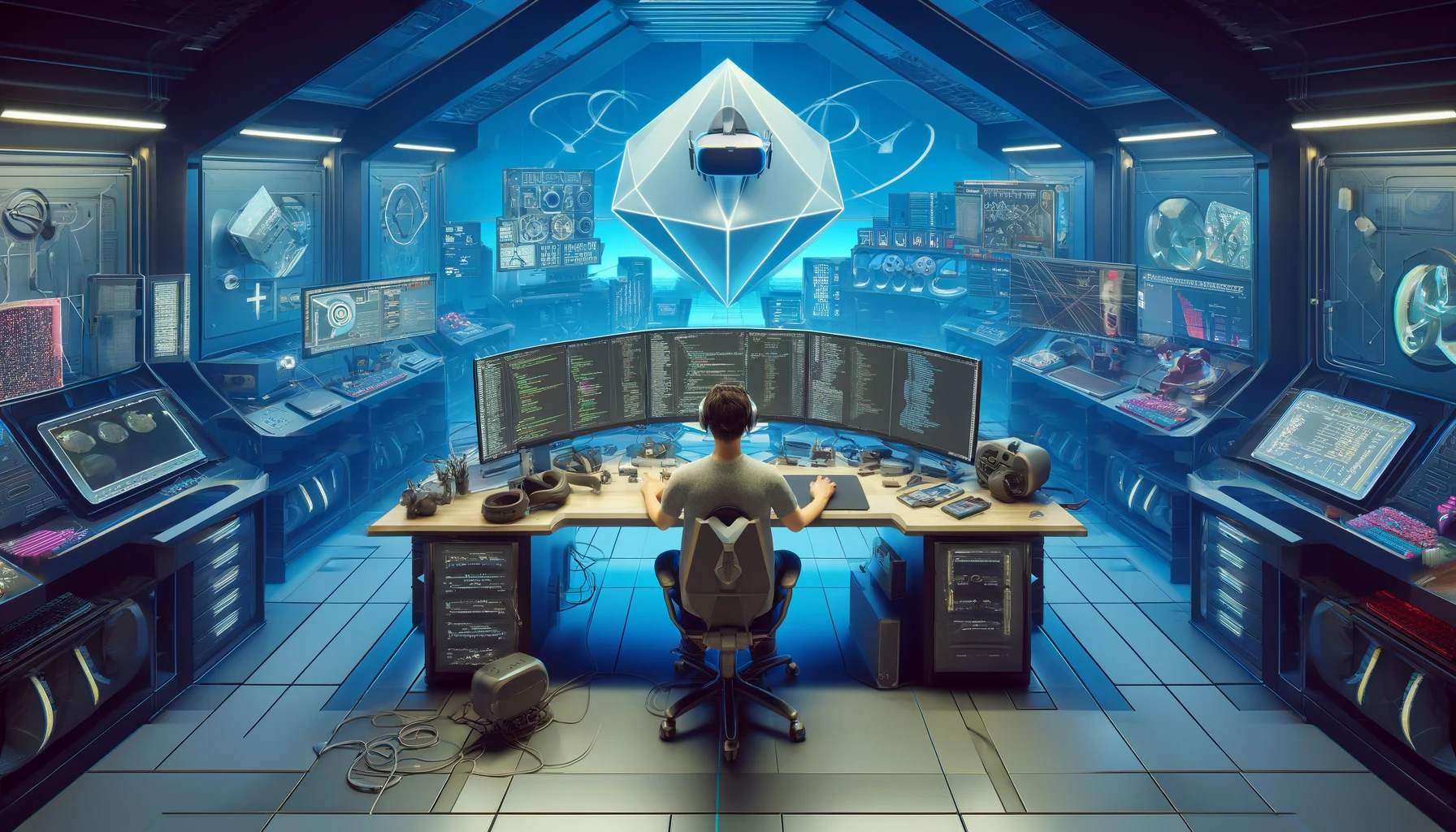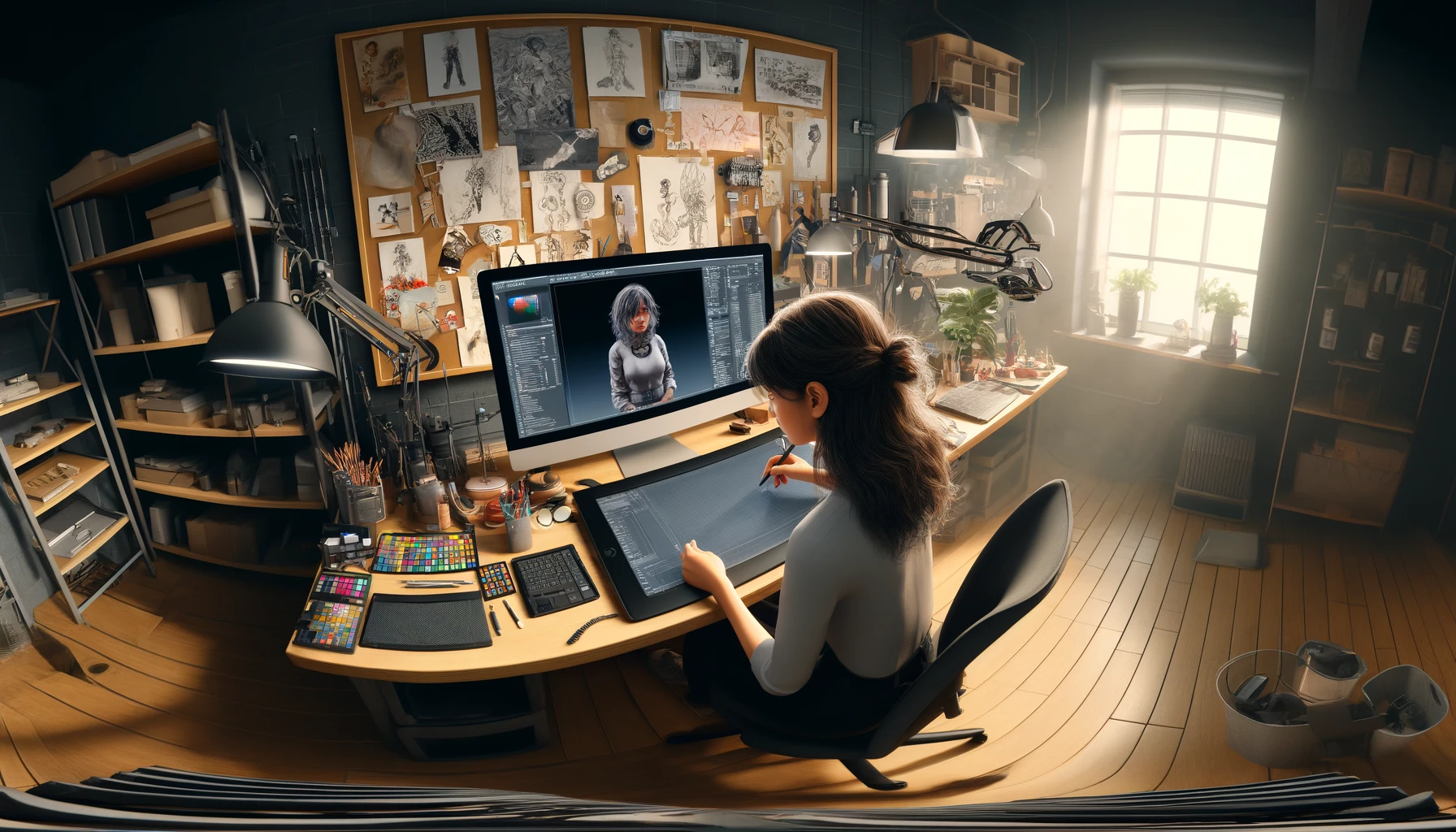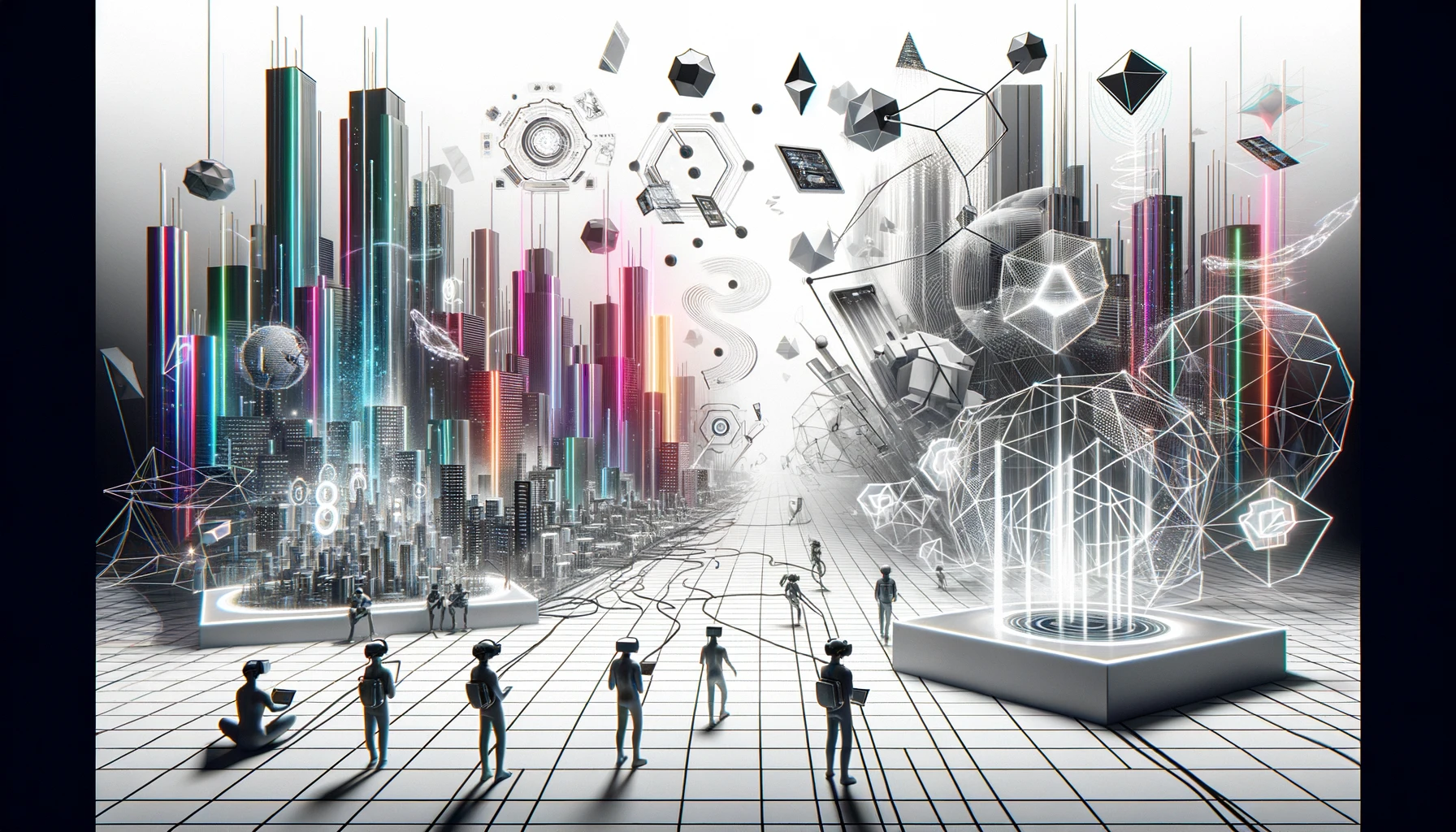Ah, you are here to diving into the rabbit hole of the Metaverse? You’re in for a treat! The Metaverse, as we’re experiencing it today, is like a sci-fi book club’s dream come true. Think of it as the love child of visionary novels and real-world tech.
Starting with the godfather of Metaverse concepts, Neal Stephenson’s “Snow Crash” (1992) deserves a standing ovation. This book introduced the term “Metaverse” and painted a picture of a virtual reality-based successor to the internet – a realm where people, as avatars, interact with each other and software agents in a 3D space. Stephenson’s imagination was like a GPS for today’s Metaverse developers, giving them a destination to aim for.
Then there’s William Gibson’s “Neuromancer” (1984), which might as well be the cool uncle of the Metaverse. It didn’t use the term “Metaverse,” but it introduced “cyberspace,” describing a virtual reality dataspace that’s suspiciously familiar to what we’re building today. Gibson’s vision was so on point, it’s like he had a time machine hidden in his typewriter.
And let’s not forget Ernest Cline’s “Ready Player One” (2011), a more recent addition to the Metaverse’s family tree. This book (and later, the Spielberg movie) brought the idea of a fully immersive virtual world into mainstream conversation. It’s like a Metaverse brochure, showcasing a digital wonderland where you can do anything and be anyone.
Let’s be realisitc and talk about the feasability of all of this! Is the current and the future Metaverse like the one envisionned in the sci-fi books?
Oh! That’s the core of Metaverse philosophy right there – where we are and where we’re headed, digitally speaking. Let’s break it down.
Today, the Metaverse is like a teenager – full of potential, a bit awkward, and figuring out how things work. We have various platforms like VRChat, Roblox, or even more sophisticated setups like those used in professional simulations. These are like mini-Metaverses, each with its unique flavor and community. We’re seeing a blend of gaming, social interaction, and the beginning of virtual commerce and workspaces. It’s a digital buffet, and we’re all trying different dishes to see what tastes best. Here’s where it gets sci-fi cool (or slightly Black Mirror-esque, depending on your viewpoint). The dream is to have a unified, interoperable Metaverse – a sort of internet on steroids. Imagine slipping on your VR headset or AR glasses and stepping into a world where you can hop from a virtual work meeting to a concert on Mars, all within the same framework. The goal is indeed to enhance our interactions, make digital experiences more immersive, and perhaps even solve some real-world limitations. Got mobility issues? No problem, your avatar can parkour like a pro in the Metaverse. Want to explore the Casbah but can’t travel to Algiers? Voilà, enjoy the virtual tour with a side of M’hajeb (digital ones, sadly).
Of course, we are not saying it is all done and out there. We’ve got technical mountains to climb – like making VR less vomit-inducing for some, improving graphical fidelity, and creating sustainable economic models that don’t just benefit the digital overlords. And let’s not forget about privacy and security concerns. We don’t want the Metaverse turning into a cyberpunk dystopia where your data is the main currency.
So basically, what we are saying is that the Metaverse is not quite there yet. Even, far from it. Think of the current state of the Metaverse like building a sandcastle. We’ve got the foundations and some towers up, but the fancy drawbridges and moats are still works in progress. The tech is improving rapidly, but we’re still figuring out issues like interoperability (making different Metaverse platforms play nicely with each other), privacy, security, and creating genuinely engaging experiences. So, while you can certainly hop into parts of the Metaverse today, the grand vision of a fully-realized, interconnected digital universe is still on the drawing board, waiting for its big, bold future.
Here are some existing mini-Metaverses that are already widely used:
- Virtual Reality Worlds: Think VRChat, where you can don an avatar and interact in 3D environments. It’s like a digital masquerade ball, but with less feathers and more pixels.
- Gaming Platforms: Roblox and Fortnite are like the cool kids of the Metaverse block. They’ve evolved beyond games into platforms hosting concerts, events, and even virtual meetups.
- Professional and Educational Tools: Platforms like Spatial are trying to make virtual meetings not just a necessity of the pandemic era, but an actual enjoyable experience. Then there are educational applications, allowing you to dissect a frog virtually (much to the relief of frogs everywhere).
- Social Media Integration: Facebook, or should I say Meta, is going all-in on integrating social media with the Metaverse. They’re crafting a future where your scroll through cat videos could be a 3D experience.
Table of Contents
- Virtual Reality Game Developer
- 3D Modeler
- Digital Fashion Designer
- Virtual Event Planner
- Metaverse Real Estate Developer
- Key Recruiters
Virtual Reality Game Developer
VR Game Developers are responsible for creating immersive gaming experiences in the metaverse. They use various programming languages and VR technologies to bring interactive game worlds to life.

To succeed as a VR game developer, one needs to master a combination of technical skills, creative abilities, and industry-specific knowledge:
-
Programming Skills: Proficiency in programming languages like C++ and C# is essential. Unity and Unreal Engine are the most commonly used game development platforms, so expertise in these is highly valuable.
-
VR Technologies: Understanding VR hardware, such as Meta Quest, Oculus Rift, HTC Vive, and HP Reverb, is crucial. This includes knowledge of their capabilities, limitations, and how to optimize software for them.
-
3D Modeling and Animation: Skills in 3D modeling, texturing, and animation are important for creating visual elements in games. Software like Blender, Maya, or 3ds Max are commonly used.
-
User Experience Design: A good VR game developer must understand user experience (UX) design principles specific to VR, which includes spatial design, interactivity, and user interface (UI) design suited for VR environments.
-
Audio Engineering: Immersive audio is a key part of VR. Knowledge of spatial audio and how to integrate sound effectively in a 3D space can greatly enhance the gaming experience.
-
Game Design Principles: Understanding the fundamentals of game design, including storyboarding, gameplay mechanics, level design, and player psychology.
-
Cross-Platform Development: As the metaverse is accessible from various devices, skills in developing cross-platform applications can be beneficial.
-
Problem-Solving and Creativity: Being able to creatively solve technical and design challenges is crucial, as VR development can present unique and unforeseen issues.
-
Collaboration and Communication: Ability to work effectively in a team, as VR game development often involves collaboration between programmers, artists, designers, and other specialists.
-
Keeping Up with Industry Trends: The field of VR is rapidly evolving, so staying informed about the latest developments in technology, gaming trends, and user preferences is important.
-
Networking and Business Acumen: Understanding the business side of gaming, including marketing and monetization strategies, and networking within the industry can be advantageous.
Key Skills: Unity3D, Unreal Engine, 3D Modeling, C++, C#
3D Modeler
3D Modelers create digital assets for various applications in the metaverse, including gaming, virtual reality, and digital architecture. They often use software like Blender, Maya, and 3Ds Max.

To really succeed in the field of 3D modeling, particularly for applications in the metaverse, gaming, virtual reality, and digital architecture, a 3D modeler needs to develop a mix of technical skills, artistic abilities, and industry-specific knowledge:
-
Proficiency in 3D Software: Expertise in 3D modeling software like Blender, Maya, and 3Ds Max is essential. This includes understanding how to use these tools for modeling, texturing, rigging, and animating.
-
Artistic Skills: A strong foundation in art fundamentals such as anatomy, color theory, perspective, and composition is crucial. These skills help in creating visually appealing and accurate models.
-
Texturing and Material Creation: Knowledge of how to create and apply textures and materials to give models a realistic appearance.
-
Lighting and Rendering: Understanding lighting techniques and how to render scenes effectively to bring out the best in the models.
-
Sculpting: Ability to sculpt detailed models, which is especially important for character modeling and organic shapes.
-
UV Mapping: Skills in UV mapping for correctly applying textures to models.
-
Animation Basics: Even if not specializing in animation, understanding the basics can be crucial, especially for rigging models.
-
Attention to Detail: Being detail-oriented is important to create intricate and nuanced models.
-
Problem-Solving Skills: The ability to troubleshoot and solve problems that arise during the modeling process.
-
Time Management: Efficiency and the ability to manage time well are important in meeting project deadlines.
-
Communication and Collaboration: Since 3D modelers often work as part of a team, good communication and teamwork skills are necessary.
-
Continual Learning: The field is always evolving with new techniques and technologies, so a commitment to continual learning and adaptation is key.
-
Understanding of the End Use: Knowledge of how models will be used in games, VR, or digital architecture, which influences how the models are created.
Key Skills: Blender, Autodesk Maya, 3Ds Max, Texturing, Animation
Digital Fashion Designer
Digital Fashion Designers create clothing and accessories for avatars in the metaverse. They merge traditional fashion design principles with digital tools to create unique virtual garments.

Key Skills: Graphic Design, Fashion Design, 3D Fashion Modeling
Virtual Event Planner
 Description: Virtual Event Planners organize events in the metaverse, from concerts to conferences. They coordinate the technical aspects, marketing, and overall experience of these virtual events.
Description: Virtual Event Planners organize events in the metaverse, from concerts to conferences. They coordinate the technical aspects, marketing, and overall experience of these virtual events.
Key Skills: Event Planning, Project Management, Marketing
Metaverse Real Estate Developer
 Description: These professionals are involved in creating and managing virtual properties. They design, develop, and sell virtual spaces for various purposes.
Description: These professionals are involved in creating and managing virtual properties. They design, develop, and sell virtual spaces for various purposes.
Key Skills: 3D Design, Property Management, Sales
Key Recruiters
- MetaPlatforms Inc. - Focus on VR and social connectivity.
- Unity Technologies - Specializes in game development platforms.
- Nvidia - Known for advancements in graphics and AI.